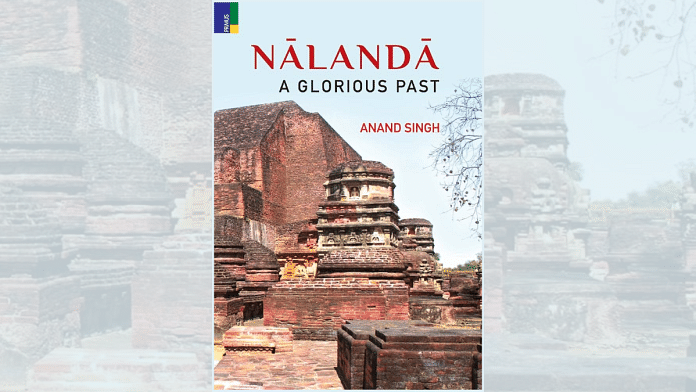Thank you dear subscribers, we are overwhelmed with your response.
Your Turn is a unique section from ThePrint featuring points of view from its subscribers. If you are a subscriber, have a point of view, please send it to us. If not, do subscribe here: https://theprint.in/subscribe/
This comprehensive volume on Nalanda by Anand Singh, published by Primus Books, 2024, offers a refreshing perspective on the World Heritage Site of Nalanda. The book masterfully weaves together the site’s essential features, cultural context, and environmental significance. Divided into six sections and 17 chapters, the volume begins with a concise introduction that establishes the site’s importance and sets the tone for the subsequent chapters.
The volume’s initial section sheds light on the backdrop of the site and its symbiotic relationship with the surrounding landscapes. Singh skilfully interweaves the archaeologies of village farming settlements, providing a rich contextual framework for understanding the site’s temporal evolution from a Vihara to Mahavihara. By integrating inscriptional, textual, and archaeological sources, Singh crafts a compelling narrative by offering a multifaceted understanding of the site and the region. Further, the author explores the economic and administrative structures that ensured the stability and operational continuity of the monastic complex.
The author holds an expertise in highlighting Nalanda’s scholastic tradition as a vital counterpart to its monastic tradition. The development of these intertwined traditions is succinctly explored in the volume with notable highlights being the school of medicine, the significance of the Arogyavihara, and other pivotal aspects that showcase Nalanda’s rich intellectual heritage. The plan of the monastic structures, chaityas, within the monastic complex and the evolution of Mahayanist traditions are masterfully woven together, providing a nuanced understanding of the complex religious processes which, in turn, reveal the shifting dynamics of the time. By seamlessly blending worshiping and academic traditions, the author offers a fascinating glimpse into the intricacies of monastic life at Nalanda. This includes its functioning, the establishment of a supra-regional networking system, and the complexities of its daily operations.
The last part of the volume brings forth discussions on Nalanda Mahavihara‘s maritime connections with South and Southeast Asia, alongside a nuanced exploration of the site’s decline – a topic of ongoing scholarly debate. With a comprehensive account of the World Heritage Site, this book is a must-read for heritage professionals, academics, and researchers seeking a deeper understanding of Nalanda’s rich history and cultural significance.
These pieces are being published as they have been received – they have not been edited/fact-checked by ThePrint.


